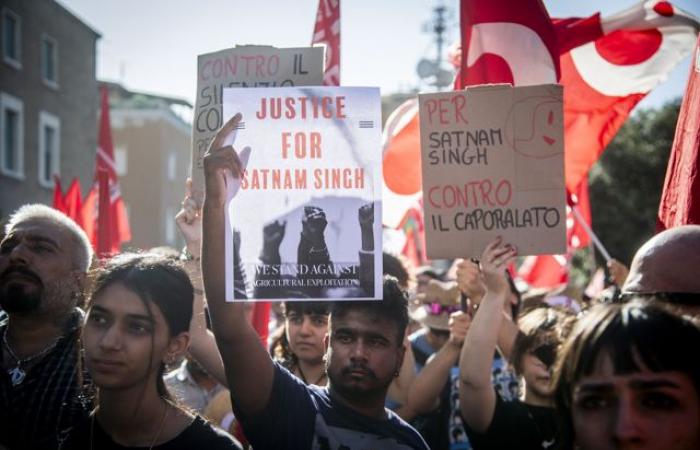“These are inhumane acts that do not belong to the Italian people,” commented Prime Minister Giorgia Meloni, after days of silence. She was referring to the death of Satnam Singh, the laborer of Indian origin, who died at the San Camillo hospital in Rome on 19 June, two days after being abandoned by his employer in front of the house where he lived in the province of Latina. A machine from the farm where he worked illegally had severed his arm and broken his legs while he was harvesting melons. In front of the house, together with the dying man and his wife, the severed arm was also left in a fruit box.
According to the results of the autopsy, released on June 24, Singh would have died from the haemorrhage and could probably have been saved if help had been called earlier. In fact, at least an hour and a half passed between the time of the accident and the time of the 112 call.
Satnam Singh, 31 years old, did not have a residence permit and was exploited in the Lovato company, together with his wife, at least twelve hours a day, without a regular contract. After the laborer’s death, his wife was granted a residence permit by the Italian government.
For five years the Lovato company had been under investigation for gangmastering: according to the accusations it used foreign labor for a few euros a day, without holidays or rest and with working hours exceeding those permitted by law.
Meloni spoke of “inhuman acts that do not belong to the Italian people”, but according to the latest Agromafie and CGIL gangmaster report, a quarter of all labourers, i.e. around 230 thousand people, are subjected to exploitation in the Italian countryside.
Even the minister of agriculture Francesco Lollobrigida, Meloni’s brother-in-law, spoke of an isolated case that did not concern the entire agricultural supply chain and blamed “a criminal”. But the gangmaster investigations in Italy concern several dozen companies.
On June 22, the unions proclaimed a two-hour strike and around five thousand people demonstrated in front of the Latina prosecutor’s office, demanding justice for Singh. Among them are many laborers of Sikh origin who live in exploitative conditions: they work up to 14 hours a day and with wages ranging from 3 to 4.5 euros an hour. According to the unions, more or less eleven thousand laborers are employed in the approximately ten thousand agricultural companies in the province of Latina, but in reality they would be more, up to thirty thousand, forced to work illegally because they do not have a residence permit.
In Italy, due to the immigration law in force – the Bossi-Fini law of 2002 – it is impossible for a foreigner already present on Italian territory to obtain a residence permit for work. The law allows only a few regular entries per year based on a quota system, which however is not sufficient to meet the needs of the labor market and which in fact creates irregularities and exploitation.
Satnam Singh’s story brings to mind that of Jerry Masslo, the South African laborer killed in 1989 in the countryside of Villa Literno while he was harvesting tomatoes. He too was an illegal immigrant, he should have obtained protection from Italy as he had fled his country due to political persecution, but at the time Rome did not have an asylum law and Masslo was forced to live as an illegal immigrant, accepting exploitative conditions inhumane in the fields.
After his death, a mass anti-racist movement mobilized with large demonstrations and obtained the approval of the first law on immigration, the Martelli law of 1990. One wonders whether today this atrocious death will trigger the same emotion and the same anger, or it will soon be forgotten.




